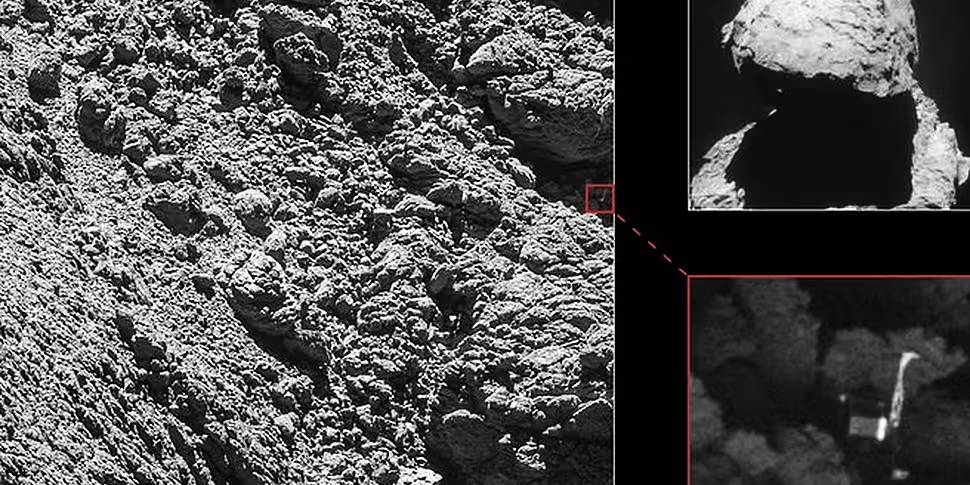A probe that lost contact with Earth after landing on a distant comet has been spotted in new pictures.
The European Space Agency (ESA) says its Rosetta orbiter has captured an image of the Philae lander wedged in a "dark crack" on the surface - more than a year since it last made contact.
The spacecraft made history in November 2014 after touching down on comet 67P/Churyumov-Gerasimenko while it was travelling at 135,000kmph (83,885mph).
Churyumov-Gerasimenko circles the sun between the orbits of Jupiter and Earth and Rosetta travelled for more than 6.4 billion kilometres (3.9 billion miles) to reach it, building up speed from four planetary flybys in a trip that took 10 years.
Once Rosetta was in position, Philae was deployed and travelled 22km (14 miles) to land on the 4km-wide lump of ice and dust as it hurtled through space.
But Philae bounced from its landing area and became lost, managing to transmit data for just three days before its battery died and it went into hibernation. It recharged enough to communicate briefly again in mid-2015.
ESA found the probe wedged in a "dark crack" after Rosetta beamed back photographs of the comet during a flyby just 1.7 miles from its surface.
The clear photographs show Philae's one-metre sized body and two of its three legs sticking out from rocks.
The discovery comes just in time, because in three weeks Rosetta will be deliberately crashed into the comet's surface to "reveal secrets" about the ice ball's interior structure.
Cecilia Tubiana, of ESA's Osiris camera team, was the first person to see the pictures when they reached Earth on Sunday after being taken on September 2nd.
She said: "With only a month left of the Rosetta mission, we are so happy to have finally imaged Philae, and to see it in such amazing detail."
Rosetta mission manager Patrick Martin said: "This remarkable discovery comes at the end of a long, painstaking search. We were beginning to think that Philae would remain lost forever. It is incredible we have captured this at the final hour."
Matt Taylor, a Rosetta project scientist, said: "This wonderful news means that we now have the missing 'ground-truth' information needed to put Philae's three days of science into proper context, now that we know where that ground actually is."









